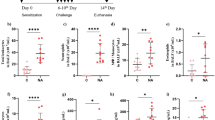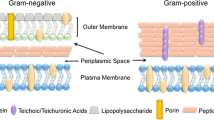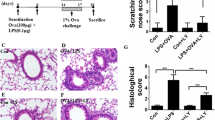Abstract
Circulating neutrophils promptly react to different substances in the blood and orchestrate the beginning of the innate inflammatory response. We have shown that in vivo exposure to hydroquinone (HQ), the most oxidative compound of cigarette smoke and a toxic benzene metabolite, affects circulating neutrophils, making them unresponsive to a subsequent bacterial infection. In order to understand the action of toxic molecular mechanisms on neutrophil functions, in vitro HQ actions on pro-inflammatory mediator secretions evoked by Escherichia coli lipopolysaccharide (LPS) were investigated. Neutrophils from male Wistar rats were cultured with vehicle or HQ (5 or 10 μM; 2 h) and subsequently incubated with LPS (5 μg/ml; 18 h). Hydroquinone treatment impaired LPS-induced nitric oxide (NO), tumour necrosis factor α (TNF-α), interleukin (IL)-1β and IL-6 secretions by neutrophils. The toxic effect was not dependent on cell death, reduced expression of the LPS receptor or toll-like receptor-4 (TLR-4) or cell priming, as HQ did not induce reactive oxygen species generation or β2integrin membrane expression. The action of toxic mechanisms on cytokine secretion was dependent on reduced gene synthesis, which may be due to decreased nuclear factor κB (NF-κB) nuclear translocation. Conversely, this intracellular pathway was not involved in impaired NO production because HQ treatments only affected inducible nitric oxide synthase protein expression and activity, suggesting posttranscriptional and/or posttranslational mechanisms of action. Altogether, our data show that HQ alters the action of different LPS-activated pathways on neutrophils, which may contribute to the impaired triggering of the host innate immune reaction detected during in vivo HQ exposure.




Similar content being viewed by others
References
Atkinson TJ (2009) A review of the role of benzene metabolites and mechanisms in malignant transformation: summative evidence for a lack of research in nonmyelogenous cancer types. Int J Hyg Environ Health 212:1–10
Bertram KM, Baglole CJ, Phipps RP, Libby RT (2009) Molecular regulation of cigarette smoke induced-oxidative stress in human retinal pigment epithelial cells: implications for age-related macular degeneration. Am J Physiol Cell Physiol 297:C1200–C1210
Cho JY (2008) Suppressive effect of hydroquinone, a benzene metabolite, on in vitro inflammatory responses mediated by macrophages, monocytes, and lymphocytes. Mediators Inflamm 2008:298010
Choi JM, Cho YC, Cho WJ, Kim TS, Kang BY (2008) Hydroquinone, a major component in cigarette smoke, reduces IFN-gamma production in antigen-primed lymphocytes. Arch Pharm Res 31:337–341
Elbim C, Lizard G (2009) Flow cytometric investigation of neutrophil oxidative burst and apoptosis in physiological and pathological situations. Cytometry A 75:475–481
Fialkow L, Wang Y, Downey GP (2007) Reactive oxygen and nitrogen species as signaling molecules regulating neutrophil function. Free Radic Biol Med 42:153–164
Gao JJ, Filla MB, Fultz MJ, Vogel SN, Russell SW, Murphy WJ (1998) Autocrine/paracrine IFN-alphabeta mediates the lipopolysaccharide-induced activation of transcription factor Stat1alpha in mouse macrophages: pivotal role of Stat1alpha in induction of the inducible nitric oxide synthase gene. J Immunol 161:4803–4810
Hebeda CB, Pinedo FJ, Vinolo MA, Curi R, Farsky SH (2011) Hydroquinone stimulates inflammatory functions in microvascular endothelial cells via NF-κB nuclear activation. Basic Clin Pharmacol Toxicol 109:372–380
Hedli CC, Rao NR, Reuhl KR, Witmer CM, Snyder R (1996) Effects of benzene metabolite treatment on granulocytic differentiation and DNA adduct formation in HL-60 cells. Arch Toxicol 70:135–144
Jin HK, Ahn SH, Yoon JW, Park JW, Lee EK, Yoo JS, Lee JC, Choi WS, Han JW (2009) Rapamycin down-regulates inducible nitric oxide synthase by inducing proteasomal degradation. Biol Pharm Bull 32:988–992
Kasama T, Miwa Y, Isozaki T, Odai T, Adachi M, Kunkel SL (2005) Neutrophil-derived cytokines: potential therapeutic targets in inflammation. Curr Drug Targets Inflamm Allergy 4:273–279
Kawai T, Akira S (2007) Signaling to NF-kappaB by Toll-like receptors. Trends Mol Med 13:460–469
Kim E, Kang BY, Kim TS (2005) Inhibition of interleukin-12 production in mouse macrophages by hydroquinone, a reactive metabolite of benzene, via suppression of nuclear factor-kappaB binding activity. Immunol Lett 99:24–29
Korhonen R, Lahti A, Kankaanranta H, Moilanen E (2005) Nitric oxide production and signaling in inflammation. Curr Drug Targets Inflamm Allergy 4:471–479
Laemmli UK (1970) Cleavage of structural proteins during the assembly of the head of bacteriophage T4. Nature 227:680–685
Lee JY, Kim JY, Lee YG, Shin WC, Chun T, Rhee MH, Cho JY (2007) Hydroquinone, a reactive metabolite of benzene, reduces macrophage-mediated immune responses. Mol Cells 23:198–206
Ma Q, Kinneer K (2002) Chemoprotection by phenolic antioxidants. Inhibition of tumor necrosis factor alpha induction in macrophages. J Biol Chem 277:2477–2484
Ma Q, Kinneer K, Ye J, Chen BJ (2003) Inhibition of nuclear factor kappaB by phenolic antioxidants: interplay between antioxidant signaling and inflammatory cytokine expression. Mol Pharmacol 64:211–219
Macedo SM, Lourenço EL, Borelli P, Fock RA, Ferreira JM Jr, Farsky SH (2006) Effect of in vivo phenol or hydroquinone exposure on events related to neutrophil delivery during an inflammatory response. Toxicology 220:126–135
McGregor D (2007) Hydroquinone: an evaluation of the human risks from its carcinogenic and mutagenic properties. Crit Rev Toxicol 37:887–914
Menezes GB, Rezende RM, Pereira-Silva PE, Klein A, Cara DC, Francischi JN (2008) Differential involvement of cyclooxygenase isoforms in neutrophil migration in vivo and in vitro. Eur J Pharmacol 598:118–122
Musial A, Eissa NT (2001) Inducible nitric-oxide synthase is regulated by the proteasome degradation pathway. J Biol Chem 276:24268–24273
Pautz A, Art J, Hahn S, Nowag S, Voss C, Kleinert H (2010) Regulation of the expression of inducible nitric oxide synthase. Nitric Oxide 23:75–93
Pons M, Marin-Castaño ME (2011) Cigarette smoke-related hydroquinone dysregulates MCP-1, VEGF and PEDF expression in retinal pigment epithelium in vitro and in vivo. PLoS ONE 6:e16722
Pons M, Cousins SW, Csaky KG, Striker G, Marin-Castaño ME (2010) Cigarette smoke-related hydroquinone induces filamentous actin reorganization and heat shock protein 27 phosphorylation through p38 and extracellular signal-regulated kinase 1/2 in retinal pigment epithelium: implications for age-related macular degeneration. Am J Pathol 177:1198–1213
Pyatt DW, Stillman WS, Irons RD (1998) Hydroquinone, a reactive metabolite of benzene, inhibits NF-kappa B in primary human CD4+ T lymphocytes. Toxicol Appl Pharmacol 149:178–184
Remer KA, Brcic M, Jungi TW (2003) Toll-like receptor-4 is involved in eliciting an LPS-induced oxidative burst in neutrophils. Immunol Lett 85:75–80
Ribeiro AL, Shimada AL, Hebeda CB, de Oliveira TF, de Melo Loureiro AP, Filho Wdos R, Santos AM, de Lima WT, Farsky SH (2011) In vivo hydroquinone exposure alters circulating neutrophil activities and impairs LPS-induced lung inflammation in mice. Toxicology 288:1–7
Richmond A (2002) NF-kappa B, chemokine gene transcription and tumour growth. Nat Rev Immunol 2:664–674
Saini R, Patel S, Saluja R, Sahasrabuddhe AA, Singh MP, Habib S, Bajpai VK, Dikshit M (2006) Nitric oxide synthase localization in the rat neutrophils: immunocytochemical, molecular, and biochemical studies. J Leukoc Biol 79:519–528
Salomão R, Martins PS, Brunialti MK, Fernandes Mda L, Martos LS, Mendes ME, Gomes NE, Rigato O (2008) TLR signaling pathway in patients with sepsis. Shock 30(Suppl 1):73–77
Sethi S, Dikshit M (2000) Modulation of polymorphonuclear leukocytes function by nitric oxide. Thromb Res 100:223–247
Snyder R (2002) Benzene and leukemia. Crit Rev Toxicol 32:155–210
Snyder R (2004) Xenobiotic metabolism and the mechanism(s) of benzene toxicity. Drug Metab Rev 36:531–547
Triggiani M, Loffredo S, Granata F, Staiano RI, Marone G (2011) Modulation of mast cell and basophil functions by benzene metabolites. Curr Pharm Des 17:3830–3835
Tripathi P, Tripathi P, Kashyap L, Singh V (2007) The role of nitric oxide in inflammatory reactions. FEMS Immunol Med Microbiol 51:443–452
Westphal GA, Bünger J, Lichey N, Taeger D, Mönnich A, Hallier E (2009) The benzene metabolite para-benzoquinone is genotoxic in human, phorbol-12-acetate-13-myristate induced, peripheral blood mononuclear cells at low concentrations. Arch Toxicol 83:721–729
Yang EJ, Lee JS, Yun CY, Kim IS (2011) The pro-apoptotic effect of hydroquinone in human neutrophils and eosinophils. Toxicol In Vitro 25:131–137
Acknowledgments
This work was supported by FAPESP (08/55382-7). Fernanda J. Pinedo was graduate fellow of FAPESP; Cristina B. Hebeda and Simone M. Bolonheis were CAPES postdoctoral fellow; Marcelo Muscara and Sandra H.P. Farsky are CNPq fellows.
Conflict of interest
The authors declare that they have no conflict of interest.
Author information
Authors and Affiliations
Corresponding author
Additional information
Cristina Bichels Hebeda, Fernanda Júdice Pinedo, and Simone Marques Bolonheis have contributed similarly in this paper.
Rights and permissions
About this article
Cite this article
Hebeda, C.B., Pinedo, F.J., Bolonheis, S.M. et al. Intracellular mechanisms of hydroquinone toxicity on endotoxin-activated neutrophils. Arch Toxicol 86, 1773–1781 (2012). https://doi.org/10.1007/s00204-012-0886-3
Received:
Accepted:
Published:
Issue Date:
DOI: https://doi.org/10.1007/s00204-012-0886-3




